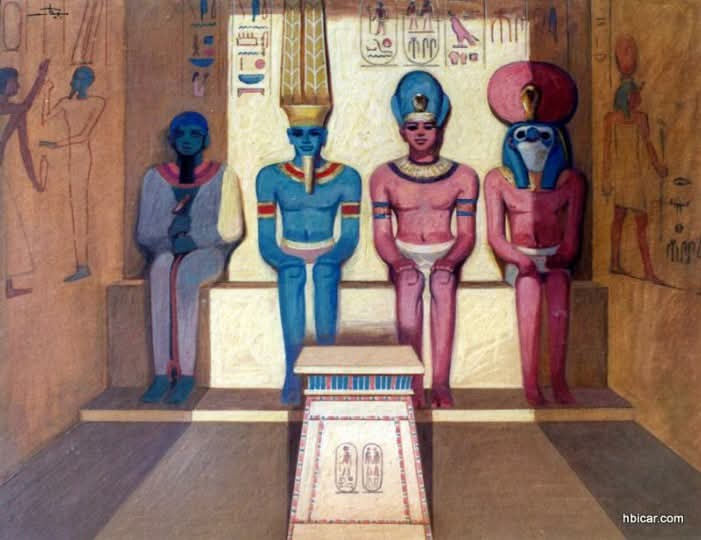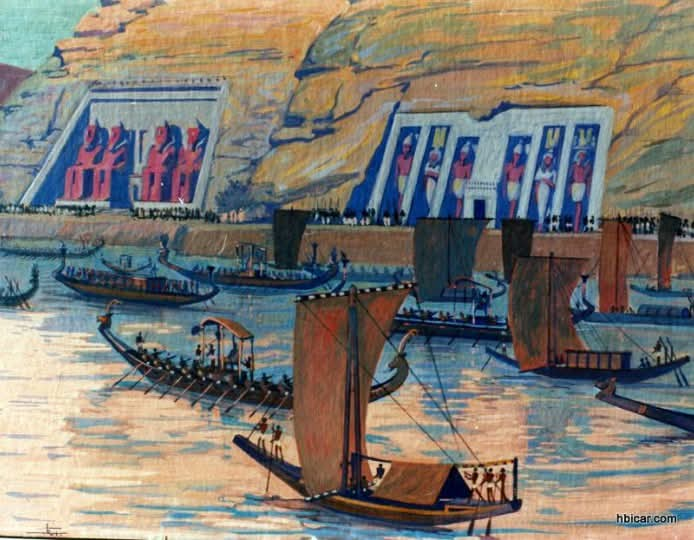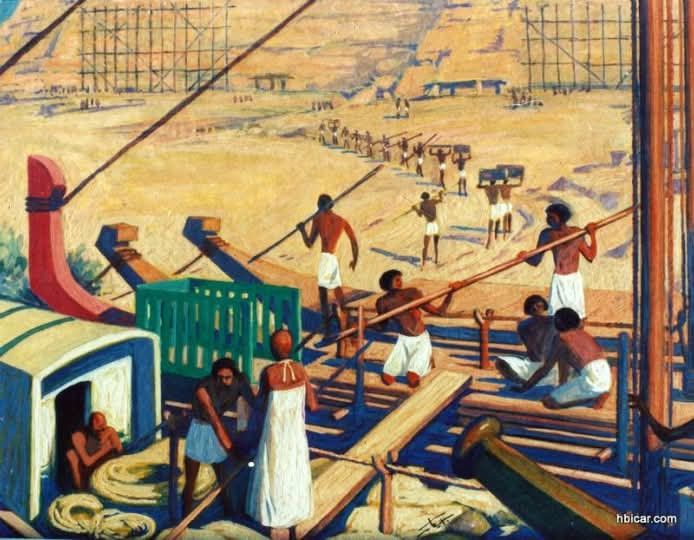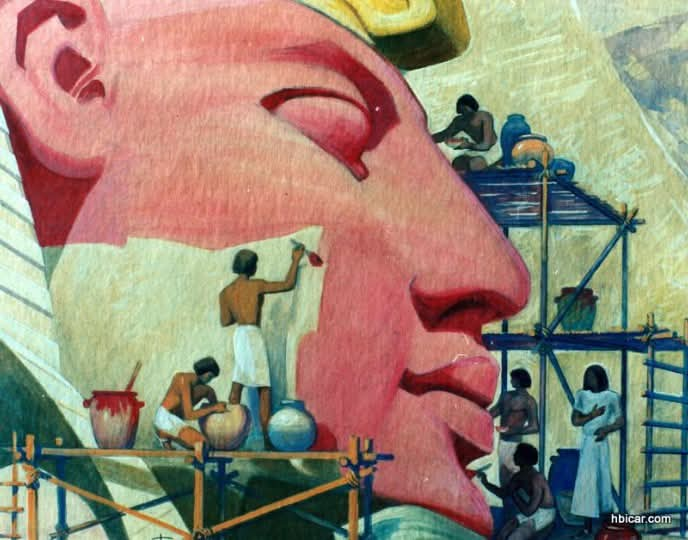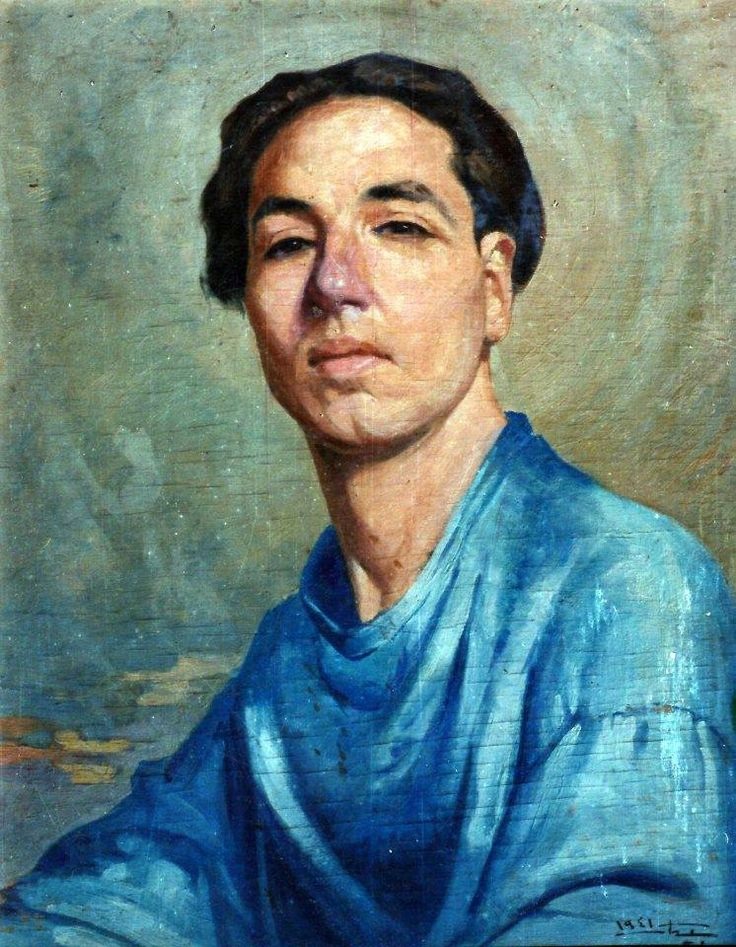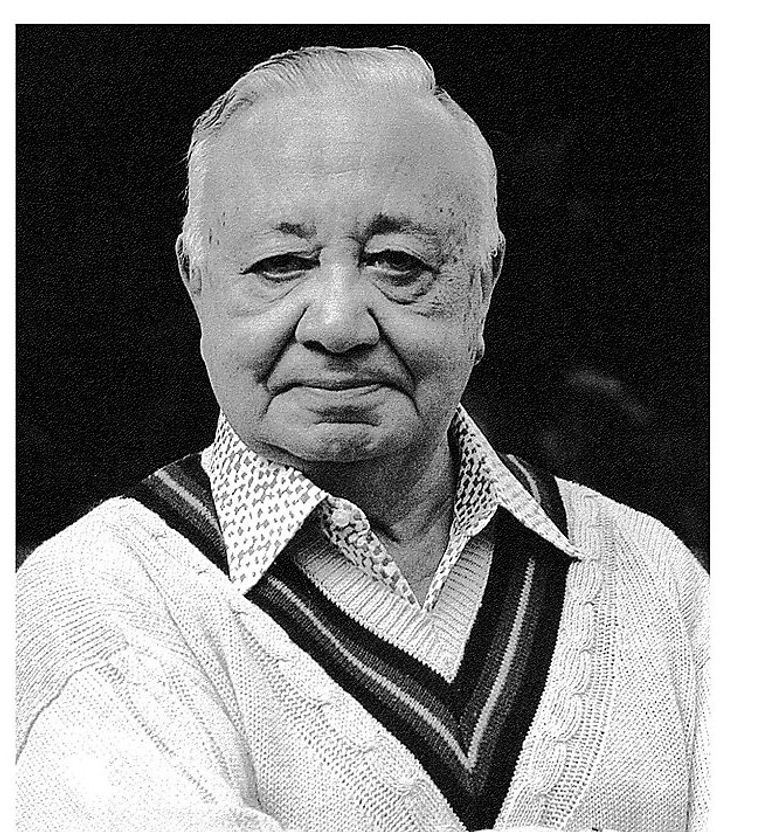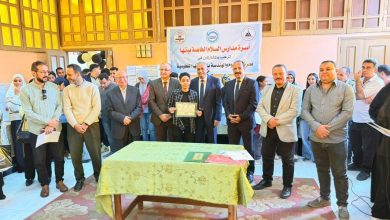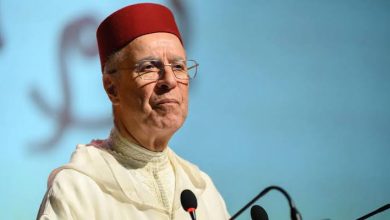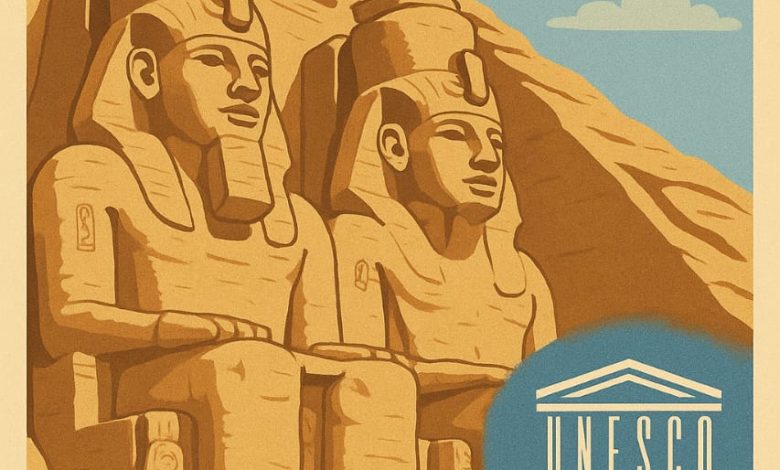
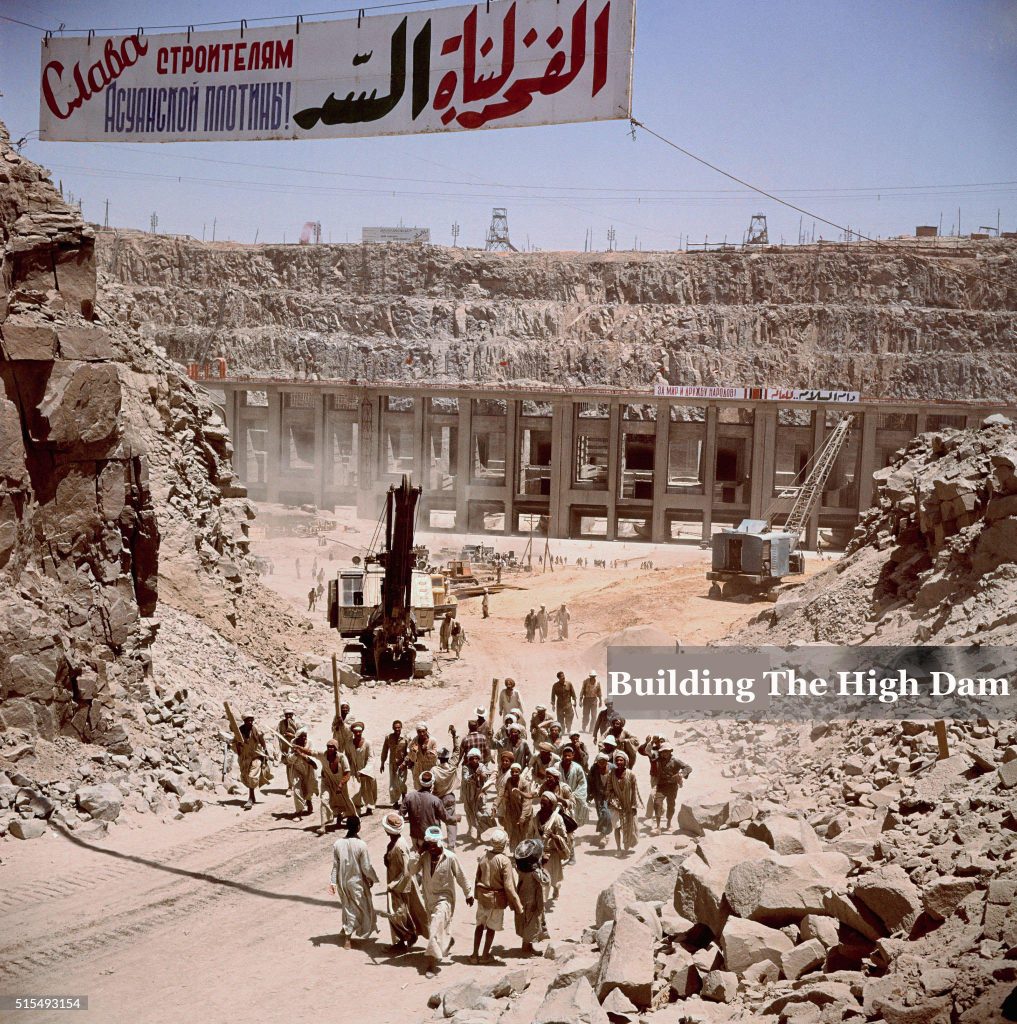
After Egypt gained its independence and the British occupiers fully evacuated its land in 1954, the revolutionaries led by former President Gamal Abdel Nasser turned their attention to rebuilding the national economy and developing the country’s infrastructure. The construction of the High Dam in Aswan was the expected leap forward in this transformation, given its immense potential for generating hydroelectric power and reclaiming agricultural land. This massive project aimed to control the floodwaters of the Nile, store them, and make optimal use of them.
Construction of the High Dam began in 1960 and continued until its official inauguration in 1970. However, something unexpected occurred: the water level of the Nile River rose significantly after the dam was built, posing a clear threat to Egypt’s southern antiquities. Lake Nasser formed south of the dam, with water levels rising up to 80 meters above the river’s surface. Parts of the Abu Simbel temples were indeed submerged, and the waters of Lake Nasser presented a severe threat to Nubia, which houses a global civilizational heritage of temples and monuments that testify to Egypt’s long history.
At this point, the Egyptian government — led by Dr. Tharwat Okasha, the then-Minister of Culture — realized the gravity of the situation. He launched an international appeal to save Nubian antiquities and exerted great efforts to draw global attention to the urgent need to preserve this heritage. In response, UNESCO adopted this call and issued an international appeal in March 1960 from its headquarters in Paris.
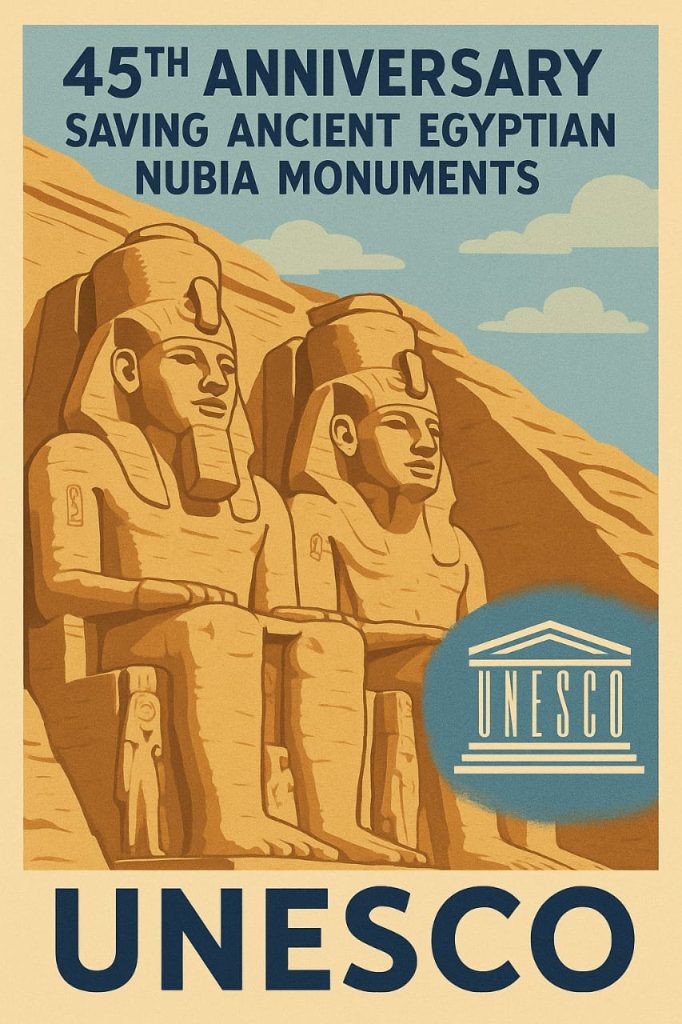
UNESCO and the Global Call to Save the Nubian Monuments
The international campaign to save the Nubian monuments began in 1960 and concluded in March 1980. The rescue operation covered all Egyptian temples in Nubia according to a chronological and geographical plan. Four major clusters of threatened temples were relocated:
1. Kalabsha Island cluster – including the temples of Kalabsha, Gerf Hussein, Beit el-Wali, and the Kiosk of Qertassi.
2. New Sebua area, located 150 km south of Aswan on the banks of Lake Nasser, included the temples of Wadi es-Sebua, Dakka, and Maharraqa.
3. New Amada area, about 190 km south of Aswan, encompassed the temples of Amada and Derr, and the tomb of Pennut.
4. The fourth cluster was dedicated to the rescue of the Abu Simbel temples.
The Transfer of the Abu Simbel Temples – An Archaeological Engineering Miracle
The project to save the Abu Simbel temples began in 1964 and took around four years. A multinational team of archaeologists, engineers, and geologists was assembled. Two proposals emerged from extensive international studies:
• The first (French) proposed building a rock dam of concrete and rubble around the temples.
• The second, proposed by Italian engineer Gazzola, suggested lifting the temples in one block.
The first proposal was rejected due to the risk of water leakage into the temples. Also, the temples were located in a depression surrounded by water, which would affect the inscriptions and sculptures. Hence, the committee approved the Italian project — but due to its estimated cost of $80 million, it was also shelved.
Egyptian engineers, archaeologists, and geologists then stepped in with the approved and executed plan: dismantling the temples into stone blocks and reassembling them on a plateau at Abu Simbel. This project, backed by UNESCO, cost $36 million.
A key engineering marvel was preserving the solar alignment phenomenon, where sunlight illuminates the face of King Ramses II inside the temple twice a year: originally on his birthday (October 21) and his coronation day (February 21). After relocation, this shifted by one day to October 22 and February 22 annually.
Around 2,000 engineers and workers, most of them Egyptian, participated in the relocation, dismantling the temples into 1,036 blocks, weighing a total of 31,000 tons. Work began in April 1964 and concluded in September 1968.
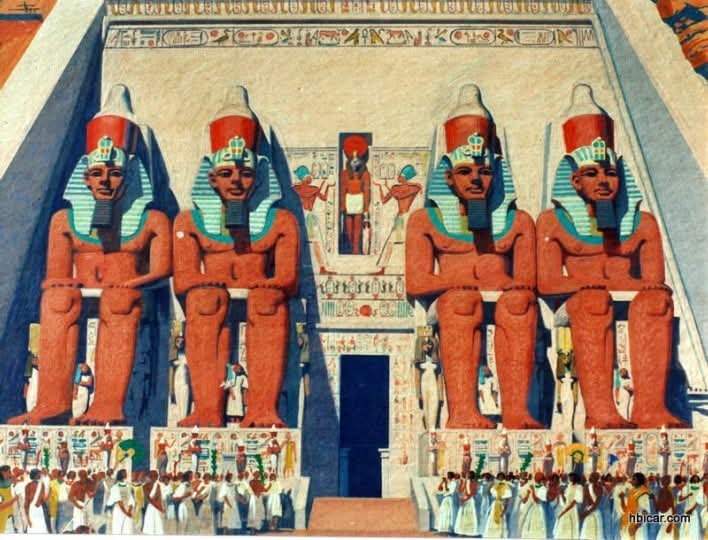
The Film “The Eighth Wonder” and the Renowned Artist Hussein Bicar
Following the success of the Egyptian Ministry of Culture in saving the Nubian monuments — with UNESCO’s support and the donations of the great Egyptian people — Dr. Tharwat Okasha asked Egyptian artist Hussein Bicar (1913–2002) to document the relocation of the Abu Simbel temples. He was to record the temples before and after relocation, and to depict life in the old Nubian communities.
Bicar painted around eighty artworks, which inspired famed Canadian director John Feeney to create the international documentary “The Eighth Wonder”. The film became a major promotional work for the High Dam project and was screened in countries like Germany and Italy, in addition to Egypt — the home of this eighth wonder. The film received widespread global acclaim.
Human Civilization Is a Shared Global Heritage
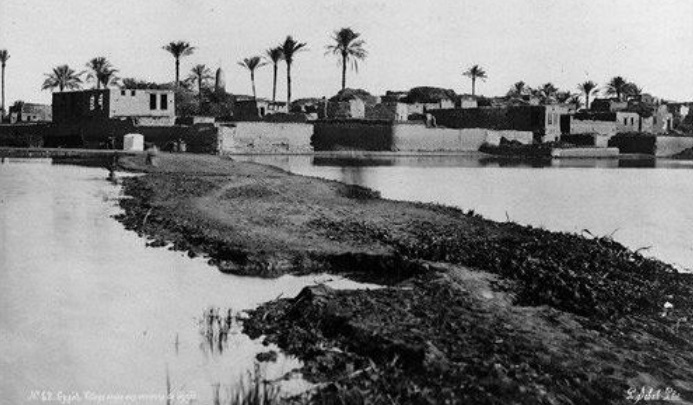
UNESCO’s mission to save the Abu Simbel temples became a powerful motivation for the organization to launch other global heritage rescue missions. A prominent example is the preservation of Venice, Italy, which was threatened by flooding — showcasing UNESCO’s global role in saving cultural legacies.
Dr. Tharwat Okasha was honored with the French Legion of Honor (Commander Rank) and UNESCO’s Silver Medal in 1968 for his role in saving Abu Simbel and the Nubian monuments. In 1970, he received UNESCO’s Gold Medal for the rescue of the Philae temples and Nubian heritage.
First published in the CAJ International Magazine June 2025

